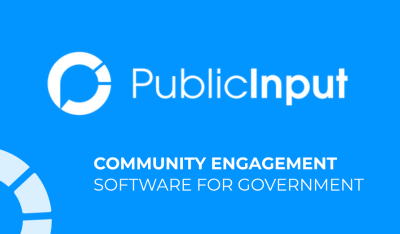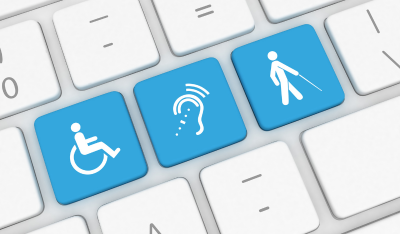
Every government agency faces challenges to equitable engagement. In this post, we’ll discuss three common challenges to equitable community engagement, along with tactics and strategies to address them.
1. Language Barriers
Around 68 million people in the United States speak a language other than English (LOTE) at home, with the 5 most common LOTEs being Spanish/Spanish Creole, Chinese, Tagalog, Vietnamese, and Arabic. Those are just the most common LOTEs; overall, there are over 350 languages spoken in the United States.
Every community faces their own language challenges, and these challenges can directly impact equitable engagement. Fortunately, there are a variety of ways to address them:
-
- Maintain standard operating procedure (SOP) documents, such as a Language Accessibility Plan or Limited English Proficiency plan, to support multilingual engagement. Include statistics on LOTEs within your community, as well as links to any resources you’ve used in the past for multilingual content. Share your SOPs with staff and stakeholders so access points and expectations are clear.
- Use an engagement software with built-in language tools. PublicInput’s platform offers a variety of language tools, such as auto-translation for surveys and multilingual closed captioning in public meetings. While auto-translated content can sometimes be clunky, it is a great foundation for creating multilingual content.
- Create relationships with translation consultants or contractors that specialize in your community’s LOTEs. Establishing relationships before you require their services can help improve the availability of this resource in a time crunch. Investing in professional translation services can elevate your community engagement to a higher level. Any translated survey questions can be saved or turned into survey template questions for future use.
- Find connection and inspiration within your community. Make connections with local nonprofits and community leaders to bring awareness to your engagement projects and build trust with culturally and linguistically diverse community members. Use this knowledge to create even better strategies for future engagement projects.
2. Digital Deserts
It’s estimated that 42 million Americans don’t have the ability to purchase broadband internet because they live in what’s called a digital desert: “dead zones” where there is a lack of infrastructure to support adequate internet access.
The FCC defines broadband as an internet connection that accommodates at least 25 Mbps download speeds and 3 Mbps upload speeds. For context, the recommended Mbps for activities like web browsing, sending emails, and participating in video conferences is a 100 Mbps download speed and 10 Mbps upload speed– which means that even with access to broadband, members of your community might not be able to participate in virtual events like online meetings.
While internet infrastructure is a community engagement topic all on its own– and the U.S. government is actively looking for ways to expand infrastructure– it is also a major roadblock to equitable engagement. Here are several strategies to address the digital divide in your community:
-
- Multimodal survey tactics, such as using both electronic and paper surveys for community members who are affected by digital deserts, can help to bridge the gap. Other options, like voicemail hotlines to collect comments, SMS text surveys, and the ability to participate in online meetings via phone call are all valuable tools. The important thing is to ensure you have a variety of options available to your community.
- Collect comments or conduct surveys at in-person events by having a tablet or computer available for community use, or allow participants to fill out paper surveys on the spot. It doesn’t have to be a public meeting; any public space or gathering can act as a space for engagement.
- Identify places where community members gather for internet access and use them to promote engagement initiatives or share survey opportunities. Libraries, coffee shops, and even fast food restaurants have become popular places for those with limited access to the internet. Hand out flyers, post on community bulletin boards, or work with these businesses to set up a table for people to ask questions and learn about your engagement initiatives.
3. Education & Awareness
Education and awareness starts long before you actually launch your surveys. Many public projects take years of planning. Without a solid information sharing strategy in place, agencies run the risk of trying to engage a community that does not understand the issue at hand or any of the ways it can affect them. Even with a strong strategy in place, agencies can face a much larger hurdle: literacy.
Literacy, whether it is the ability to understand a complicated sentence or accurately read a graph or chart, plays a large role in any public outreach campaign. 54% of U.S. adults read at or below a 6th-grade level, while the average American adult reads at a 7th to 8th grade level. This means that ideally, all information provided as part of a community engagement project should be well-written, concise, and use plain, active language to ensure the majority of participants understand the content.
Some strategies to help make engagement content accessible to the majority of readers include…
-
- Provide a short summary of all long form content. Long documents, such as transportation plans or master plans, are valuable to many people. At the same time, these documents can also be very intimidating to the average citizen. Create a quick synopsis that outlines the main points of the current initiative, why it’s important, and how it could affect the community.
- Use visual aids. Videos, especially those that include narration, can help participants understand an issue or provide additional context to a written document. The same goes for infographics. Refrain from using overly complicated chart formats, such as line charts (chart interpretation can be spotty; this is another type of literacy called numeracy). Simple, effective graphics are easier to understand.
- Review your written content, whether it is a survey question or a project description, prior to posting. There are a variety of helpful literacy tools on the internet, and many literacy readability tools are free to use. These tools calculate the approximate readability grade of a text. Common readability measurements include the Flesh-Kincaid, New Dale Chall, and Spache readability indexes. Paid tools often offer suggestions to simplify and improve content.
Ready to Tackle Equitable Community Engagement?
PublicInput is a comprehensive online engagement platform. Book a demo and learn more about how our engagement software helps you address language barriers, digital deserts, and information sharing.



